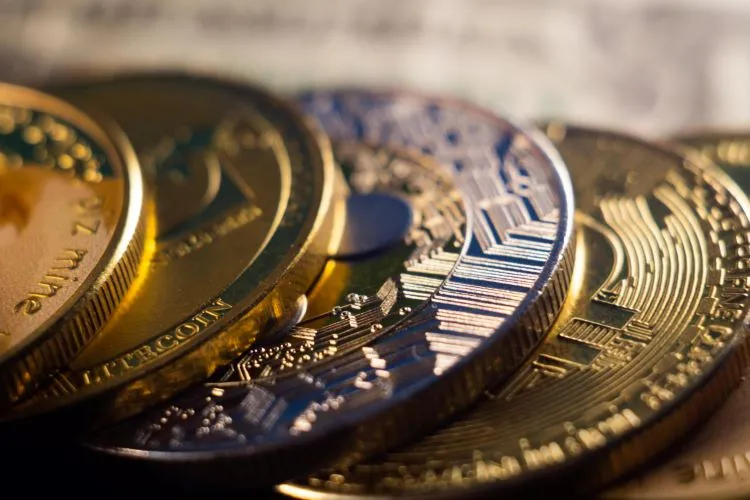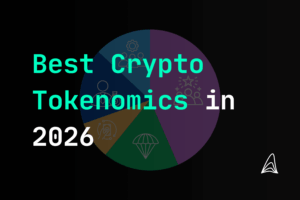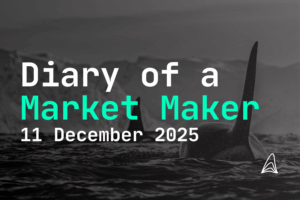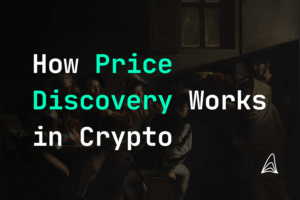
How to Avoid Impermanent Loss When Providing Liquidity in DeFi
Table of Contents
At Orcabay, we excel at offering top-tier market making services, liquidity solutions and customized liquidity solutions. Leveraging our extensive experience and crypto market making strategy we ensure liquidity and efficient trading in the cryptocurrency space.

Jakob Brezigar
Jakob, an experienced specialist in the field of cryptocurrency market making, boasts an extensive international presence. With Orcabay, he has skillfully managed major operations and deals for a wide array of global stakeholders.
What is Impermanent Loss in DeFi?
Impermanent Loss occurs when the value of assets in a liquidity pool diverges from prices elsewhere due to market dynamics, often affecting assets’ worth in decentralized finance (DeFi) systems. It’s a temporary discrepancy in asset value often seen in liquidity pools that involve Automated Market Makers (AMMs).
How can I protect my assets from Impermanent Loss?
Protection involves several strategies: using stablecoin pools to reduce volatility, diversifying your assets across different liquidity pools, staying informed about market changes, regular monitoring, considering insurance-like features on some DeFi platforms, and hedging against asset value fluctuations.
Is Impermanent Loss present in yield farming and staking?
Yes, in yield farming, lending assets to AMMs might lead to impermanent loss, though rewards earned might compensate for the potential loss. In DeFi staking, depositing a voucher (or LP token) can result in discrepancies in asset value upon retrieval, termed as impermanent loss. Knowledge and understanding of the system are crucial to navigate these intricacies.
What is Impermanent Loss?
Impermanent Loss is when the value of assets in a “liquidity pool” changes compared to prices elsewhere.
For clarity, imagine two boxes: one named “liquidity pool” and the other a regular box. If you store apples in both, the total value of apples in the liquidity pool might shift due to market factors.
This difference in value is “Impermanent Loss”. Essentially, it warns that assets in the liquidity pool may not retain the same worth over time, influenced by market demand total liquidity, and relative value changes in deposited assets.
If considering placing assets in such liquidity pools, be prepared for potential value fluctuations.
Where does impermanent loss happen?
Impermanent loss mainly happens in certain online money systems called “decentralized finance” or “DeFi” for short.
Within these systems, there are special tools called Automated Market Makers (AMMs). Some examples of these tools are Uniswap, Balancer, and SushiSwap.
Imagine an online apple market. Stalls named “Uniswap” or “Balancer” use AMMs to facilitate apple trades. Some people, known as “liquidity providers”, offer their apples to these stalls, aiming to profit from trading fees.
However, the present value” of their apples can shift unexpectedly, leading to “impermanent loss”. Thus, those offering apples should be aware of potential value changes.
Why does impermanent loss happen?
Impermanent loss happens because of how certain online trading tools, called AMMs, decide the value of items or assets.
Consider an online apple market with special stalls (e.g., Uniswap). Here, apple prices are determined by rules from AMMs. Suppose apple prices shift in an external market, but the exchange rate in our online market lags behind.
Smart traders, or “arbitrage traders”, spot this discrepancy. They buy and sell apples, aligning prices with the external market.
“Liquidity providers”, who initially supplied apples, might end up with varied assets or fewer apples due to this trading.
This unintended price change is termed “impermanent loss”, resulting from current price, from AMM functions and arbitrage actions.
How can you protect your assets from impermanent loss in a special online market?
Stopping impermanent loss completely can be tough, but there are ways to make its effect smaller.
Stablecoin Pools: Imagine there’s a special kind of apple called a “stable-apple”. The price of this apple doesn’t go up or down too much.
If you decide to keep most of your apples with these “stable-apples” in the market, the chances of their value changing a lot becomes less.
So, by keeping your apples with stable-apples (or stablecoins), the ups and downs in value (or price volatility) can be smaller.
Diversify: Don’t put all your apples in one basket, or in this case, one stall. Instead, spread them across different stalls in the market.
This way, if one stall has a problem, not all your apples will be affected. In the online world, this means joining different “liquidity pools” to spread out your risk.
Stay Informed: Imagine there’s a big apple festival coming up in town. This might change how many people want to buy or sell apples.
By knowing about these big events ahead of time, you can decide what’s best for your apples.
Similarly, always keep an eye on big news or events in the online world that might change the value of the things you’ve kept in the market.
In simple words, the best way to protect yourself is to be smart about where you keep your assets, spread them out, and always stay updated on what’s happening.
How can you guard against impermanent loss?
To minimize the impact of impermanent loss, consider the following strategies:
Regular Monitoring: Just as you’d frequently inspect a garden to ensure plants are thriving, routinely monitor your assets in the digital marketplace, particularly within liquidity pools.
Insurance: Like insuring a valuable asset such as a house, certain DeFi platforms offer insurance-like features to cushion against potential impermanent loss.
Hedge: By employing hedging techniques, you can set a safety net against asset value fluctuations.
For instance, if you’re concerned about dropping apple prices, you might lock in a deal to sell them at the current rate, regardless of future market conditions.
This mirrors the concept of “put options” in the digital realm.
In essence, regularly overseeing your assets, seeking protection, and adopting safeguarding measures can help provide liquidity to shield against impermanent loss.
How Does Impermanent Loss Occur in DeFi?
Think of DeFi as an online apple market with a unique stall using an AMM to price apples. Sometimes, this stall’s apple price differs from token prices on external markets.
When smart traders spot these price differences, they buy cheaper apples from the AMM-stall and sell them at higher prices elsewhere, seeking a lower price and quick profit.
Such trading alters the apple supply at the AMM-stall. For “liquidity providers” who contributed apples, this can decrease their assets’ value.
In DeFi, this unexpected value change due to price disparities and trader actions is termed “impermanent loss”.

Is there impermanent loss in yield farming?
Imagine yield farming is like planting apple trees to get more apples in return. But instead of just planting, you also lend out some of your apples to a special store in town (called AMMs).
Now, by lending out apples to this store, there's a chance the number or the dollar value of your apples can change. This is the unexpected change we've been calling "impermanent loss".
But here's the bright side: for lending your apples to the store, they give you some benefits.
They might let you earn rewards or share in the profit when people buy and sell apples (these are the "trading fees"). Plus, sometimes they might even give you bonus apples or rewards (that's the "farming rewards").
So, yes, in yield farming, there's a risk of facing this "impermanent loss" when you lend out to these AMMs.
But the goodies and benefits you get in return might make up for it or even be more than what you might lose.
What is an example of an impermanent loss?
Imagine you have a toy chest, kind of like a shared box (which we’ll call the “liquidity pool”).
You decide to put in 1 toy robot (let’s call it ETH) and 100 toy coins (let’s call them USDC).
At the time you put them in, 1 toy robot equivalent value, is worth the same as 100 toy coins, so 1 ETH = 100 USDC.
Now, after a while, the toy robot becomes super popular in the playground. Everyone wants one! Its value doubles compared to the token price of the toy coins.
So, if before you could trade 1 robot for 100 coins, now it might be worth 200 coins.
But here’s where the twist happens:
When you go back to your toy chest and decide to take out your toys, you might find something like 0.8 of the robot toy (so, a bit less than the whole toy) and 120 toy coins.
You might think, “Wait, I put in a whole robot toy, why do I now have only 0.8 of it?” That missing value, the little bit of robot you don’t get back, is what we call “impermanent loss”.
Even though you got some extra toy coins, the value isn’t quite the same as having the full robot, especially since its popularity made it more valuable!
How to calculate impermanent loss
- Understand the Price Changes: First, you need to figure out how much the value (or price) of your items (or assets) has changed since you put them in the special online market.For example, if you put in a toy robot and its value doubled while the toy coins you also put in stayed the same, then you have some numbers to start with.
- Use the Formula: There’s a special formula to help you figure out this “impermanent loss”.
Without diving too deep into the heavy math, the formula takes into account the changes in the value of your items and some other factors to give you a number that represents your loss.
However, to properly use this formula and get an accurate idea of your impermanent loss, you might need some knowledge of math or might want to use our impermanent loss calculator.
In short, while the process can be a bit tricky, with the right tools and information, you can get a clear picture of any impermanent loss you might experience.
Arbitrage Opportunities In Liquidity Pools
The vast and interconnected landscape of financial markets, especially in the realm of DeFi, sometimes gives rise to intriguing pricing anomalies.
Owing to differences in liquidity, volume, or even user behavior, there may be momentary price disparities between AMMs and conventional trading platforms.
These deviations from the fair market price are nothing less than golden opportunities for eagle-eyed traders who have an appetite for arbitrage.
By diligently spotting these pricing differences between multiple exchanges and trading pairs, traders can exploit the situation by purchasing assets at a more favorable, reduced price on one platform and subsequently selling them at a higher price on another, thus locking in the difference as profit.
Beyond individual gains, this same arbitrage trading activity serves a larger purpose: it plays a pivotal role in restoring and maintaining price equilibrium across diverse platforms.
Popular DeFi Platforms That Use Automated Market Makers
Names like Uniswap and Balancer have become emblematic of the DeFi realm, predominantly due to their reliance on AMM-centric trading protocols.
With their staggering total value locked (TVL), these platforms epitomize the efficacy and dependability of the AMM framework.
Their widespread embrace by the DeFi community accentuates the growing faith in AMM-centric decentralized platforms.

Why Are AMMs Becoming Popular?
Automated market makers are resonating deeply within the DeFi sphere and the broader decentralized exchange landscape.
Their innate capability to source liquidity for even lesser-known tokens offers unparalleled advantages.
Furthermore, the AMM paradigm empowers users by democratizing liquidity providers' income opportunities to other users. By allowing virtually anyone to partake as a liquidity provider, it fosters inclusivity.
The blend of user empowerment, coupled with heightened market efficacy, has catapulted AMMs as the linchpin of DeFi advancements.
Improving AMM Models With Hybrid, Dynamic, Proactive, and Virtual Solutions
The trajectory of AMMs isn’t linear. Visionaries in the domain constantly strive to enhance and adapt these models. Hybrid models are surfacing, endeavoring to meld the attributes of conventional order books with automated market makers on decentralized exchanges.
Then there are Dynamic AMMs, which adjust their tactics based on real-time market insights. Proactive models are diving into anticipatory adjustments, while virtual AMMs are pushing the envelope regarding scalability and efficiency.
AMM Security Issues
The allure and transformative potential of an automated market maker in the DeFi landscape is undeniable. However, as with most innovative technologies, they come with their fair share of vulnerabilities.
Smart contracts, particularly those managing liquidity pools in a smart contract framework, are critical elements that need continuous oversight.
While smart contracts are engineered to revolutionize trading and provide liquidity, imperfections in the smart contract or unforeseen market turbulences can be detrimental.
There have been instances where poorly designed or audited smart contracts became easy targets for hackers.
Additionally, unexpected market events, such as massive liquidations or price manipulations, could result in what’s known as “impermanent loss” for liquidity providers.
This type of loss occurs when the price of a token inside a liquidity pool deviates substantially from the market price.
Hence, for anyone considering becoming a liquidity provider or interacting with AMMs, a thorough understanding of deep liquidity, meticulous research, and cautious strategy formulation are crucial.
Safeguarding one’s investment in the volatile realm of DeFi requires an equal mix of enthusiasm and caution.
Dynamic Automated Market Maker (DAMM)
DAMMs stand as the vanguard in the ever-evolving world of automated market makers. By closely monitoring market behaviors, they recalibrate their algorithms to offer more accurate and competitive pricing.
The main advantage lies in their ability to dampen the adverse impact of large or sudden trades, which can disrupt market equilibrium.
By doing so, DAMMs not only enhance the overall health and stability of the market but also instill confidence among traders.
Proactive Market Maker (PMM)
Moving a step beyond the reactive nature of many existing models, PMMs are the visionaries of the AMM world. They don’t just adapt; they anticipate.
Using advanced algorithms and possibly integrating machine learning techniques, PMMs analyze historical data and current market trends to forecast potential shifts.
Based on these predictions, they proactively tweak their strategies, ensuring that the current market price remains as stable as possible even before any significant change occurs.
This proactive approach aims to offer traders better exchange rates and a smoother trading experience.
As PMMs continue to mature, their anticipatory model may very well set a new standard for automated market-making in the future.
Virtual Automated Market Makers (vAMM)
vAMMs are more than just another step in the evolution of AMMs; they represent a groundbreaking leap.
Harnessing the power of virtual mechanisms and possibly integrating with off-chain solutions, vAMMs are designed to operate beyond the constraints that bind traditional AMMs.
They are conceptualized to handle vast volumes, deliver heightened performance, and offer a broader range of utilities without compromising on security or decentralization.
As we navigate deeper into the age of DeFi, vAMMs could potentially serve as the foundational pillars, heralding a new era where scalability and efficiency are not just desired but are the norm.



